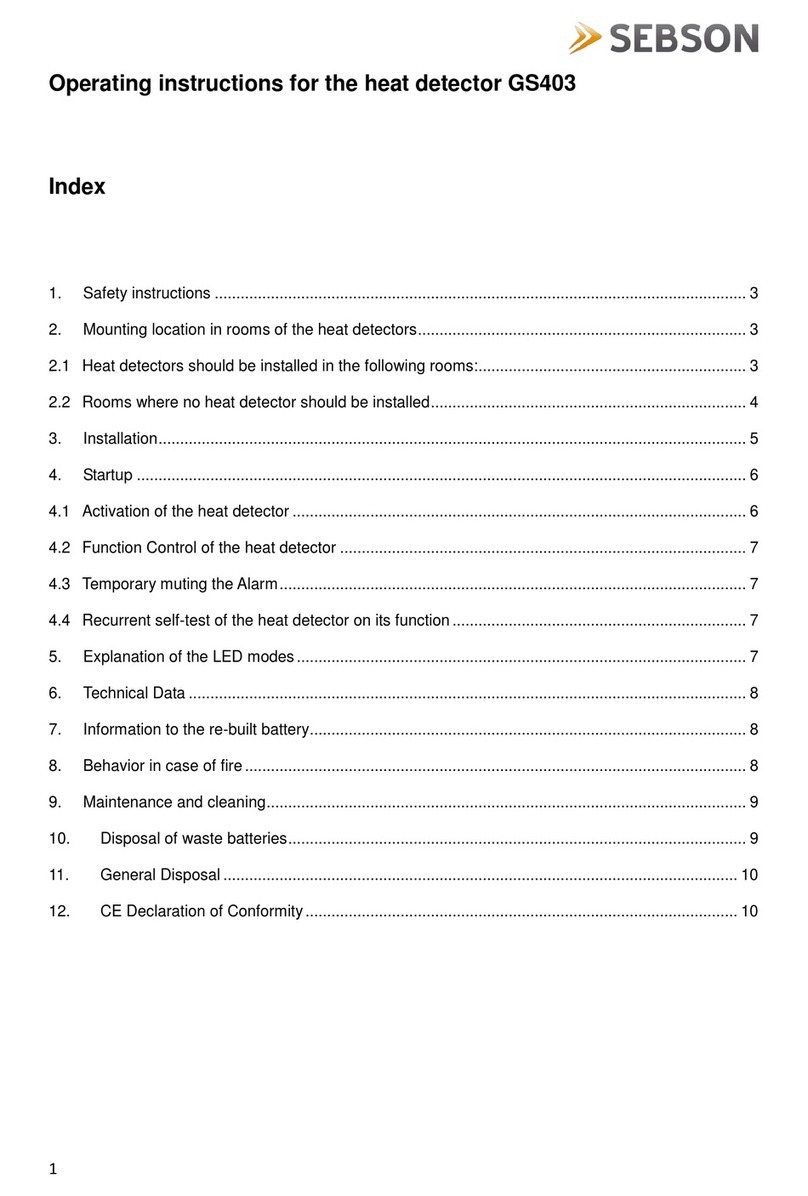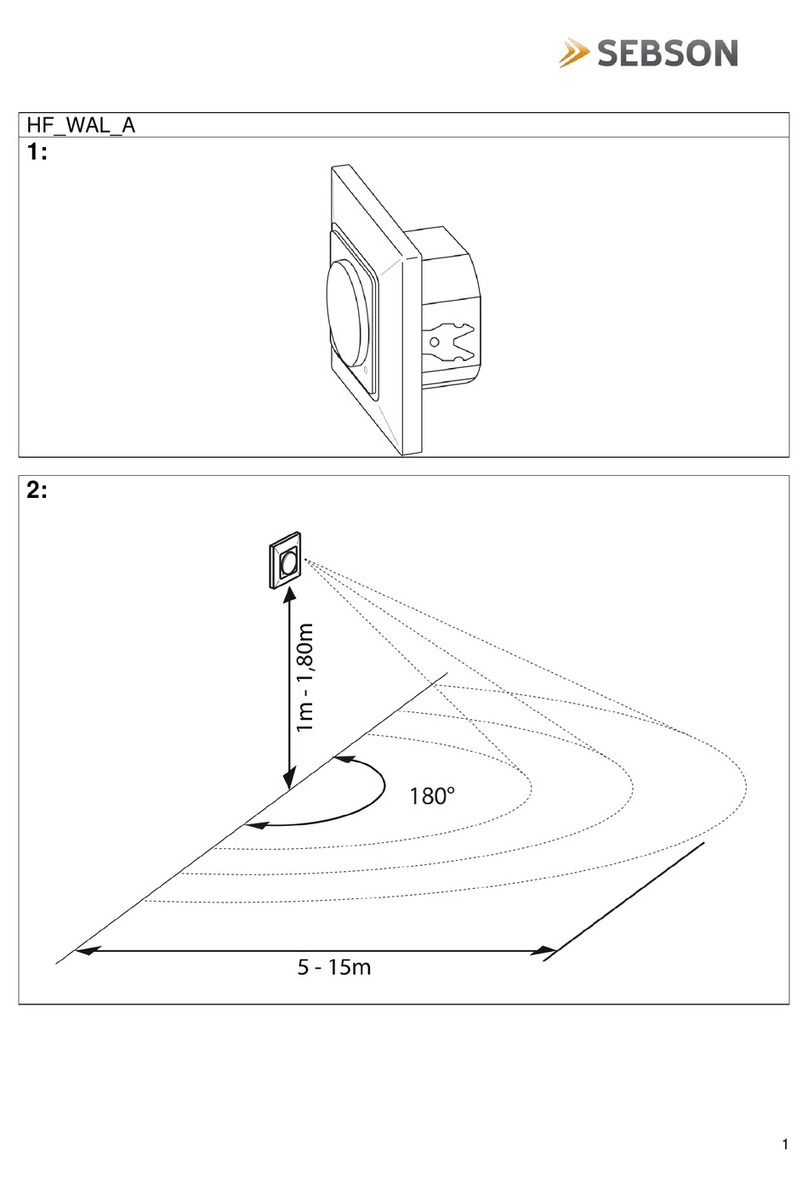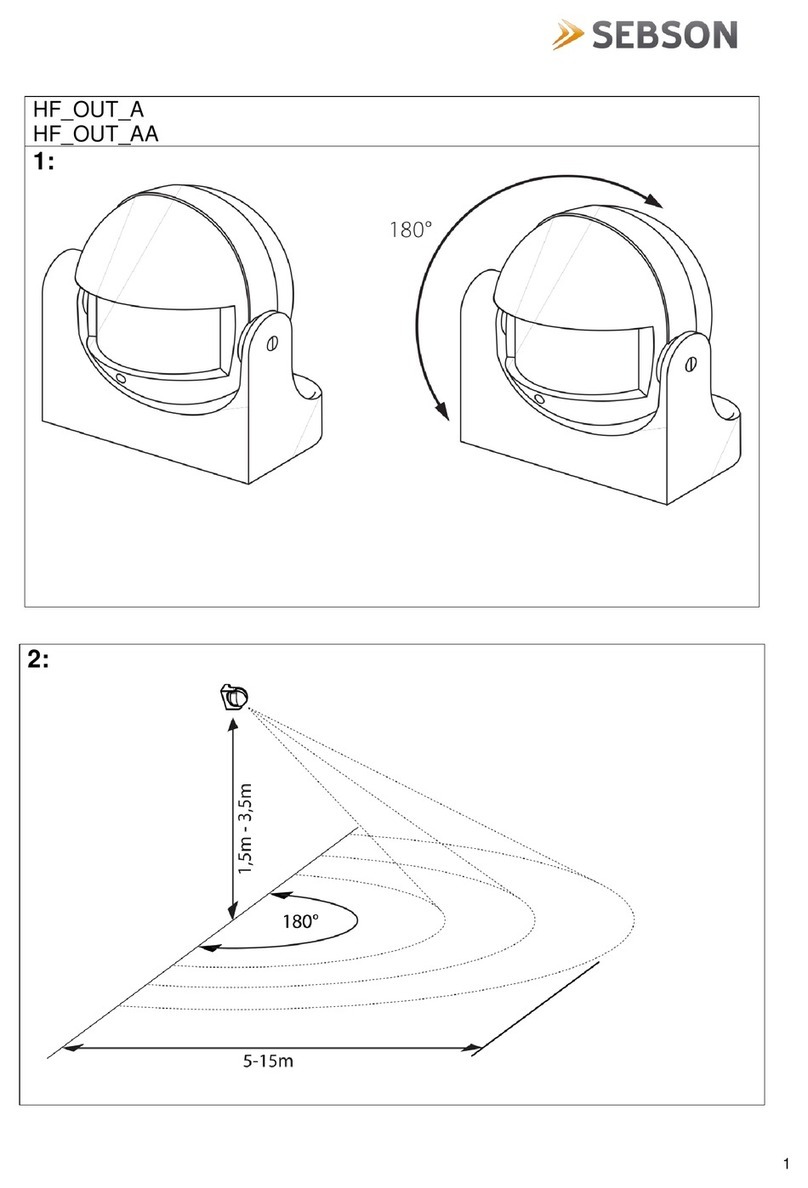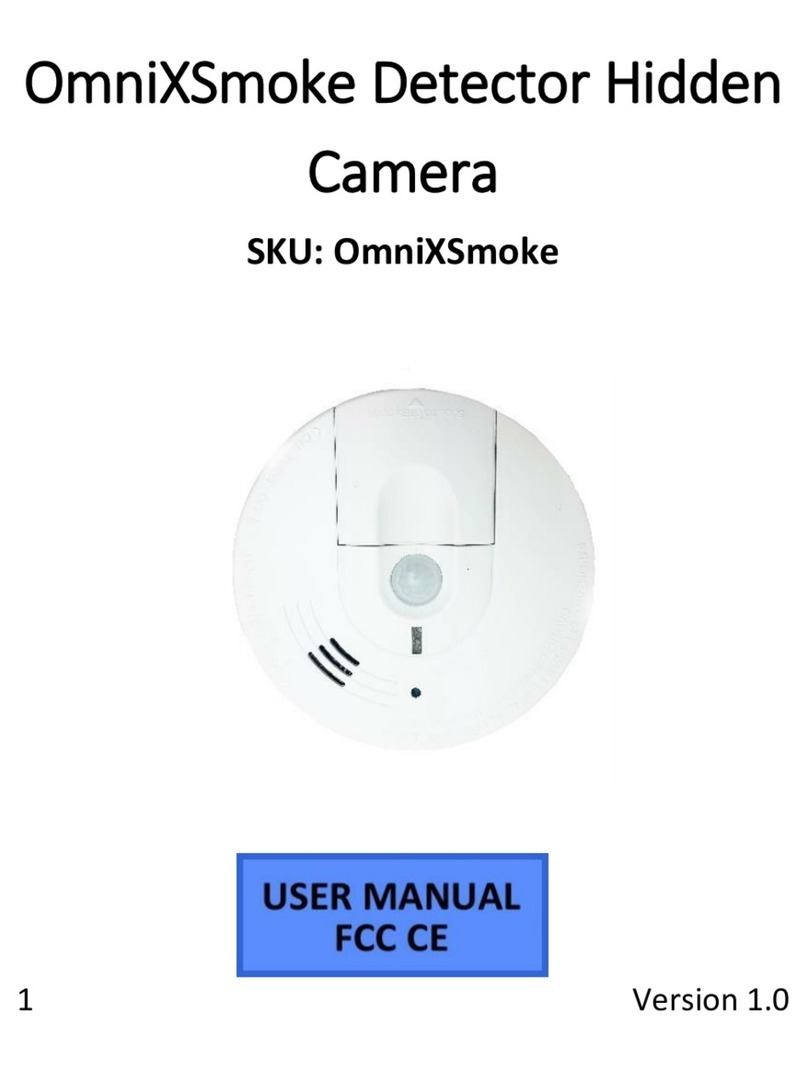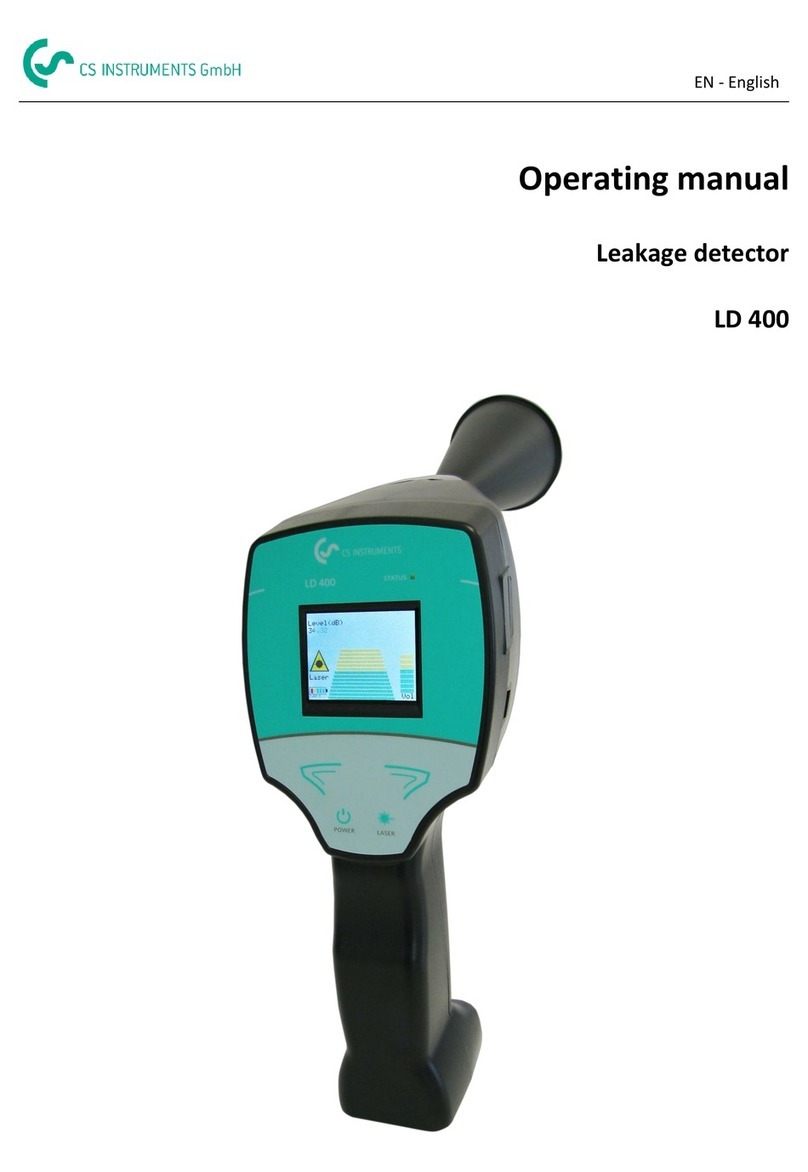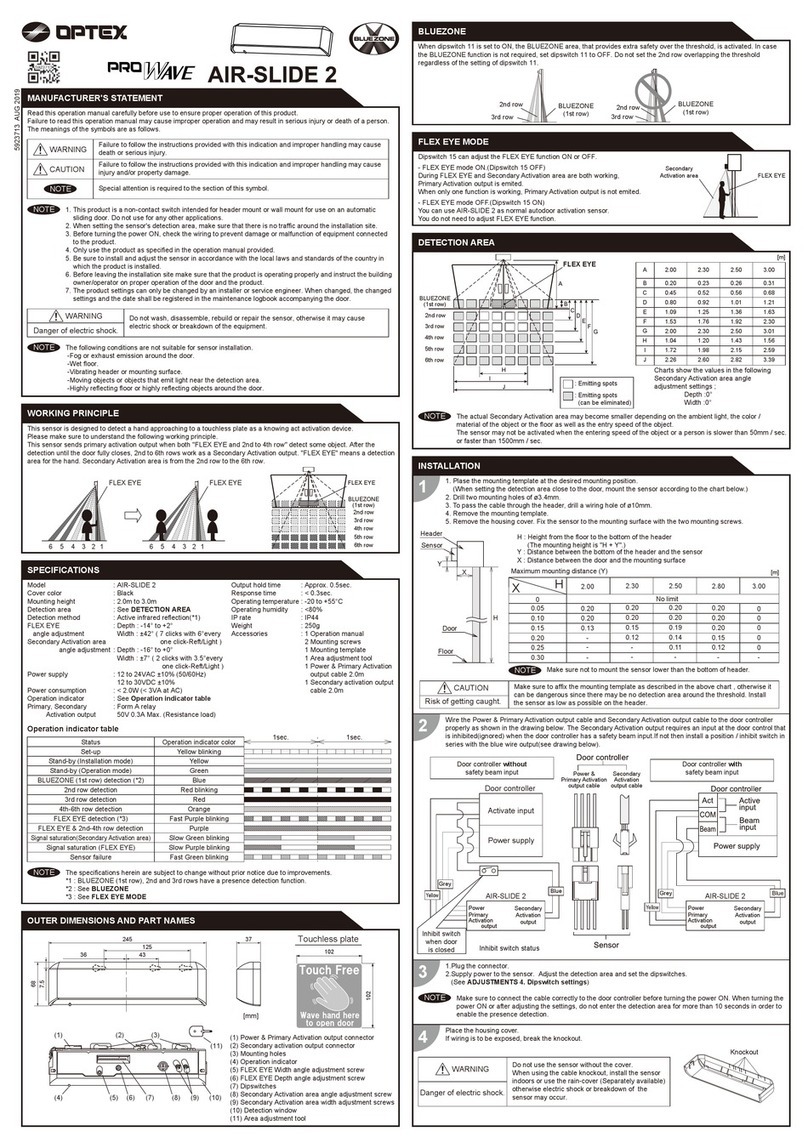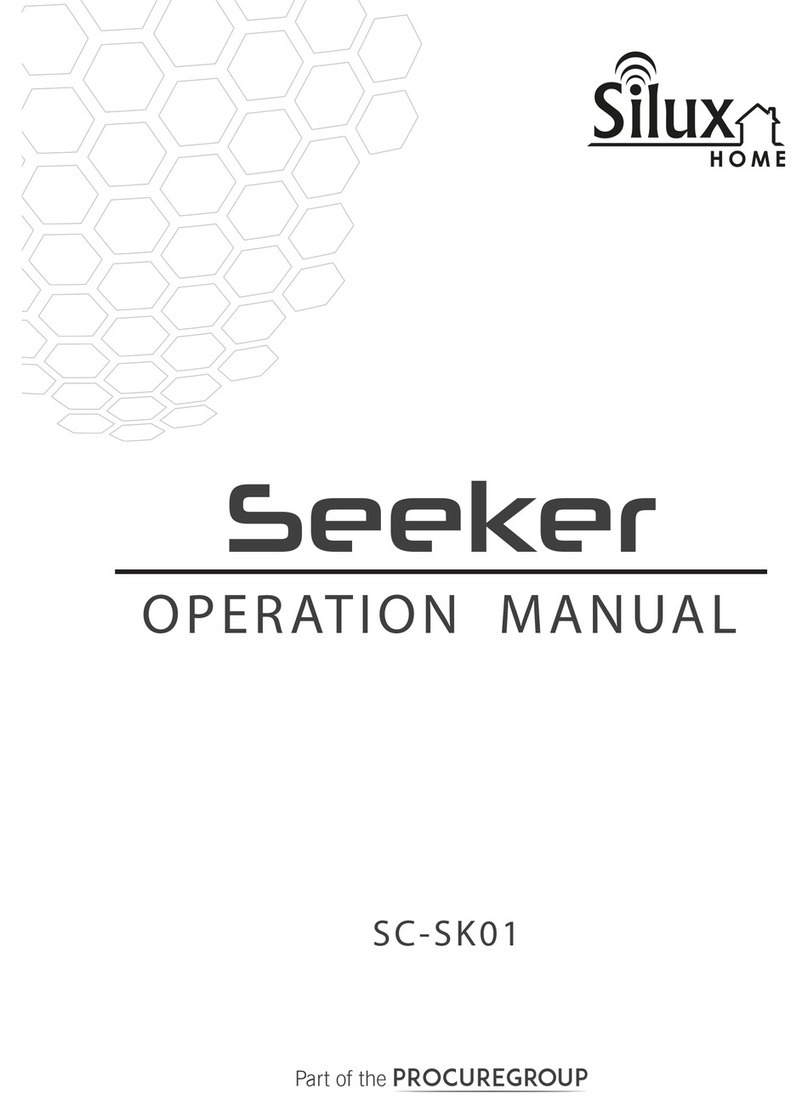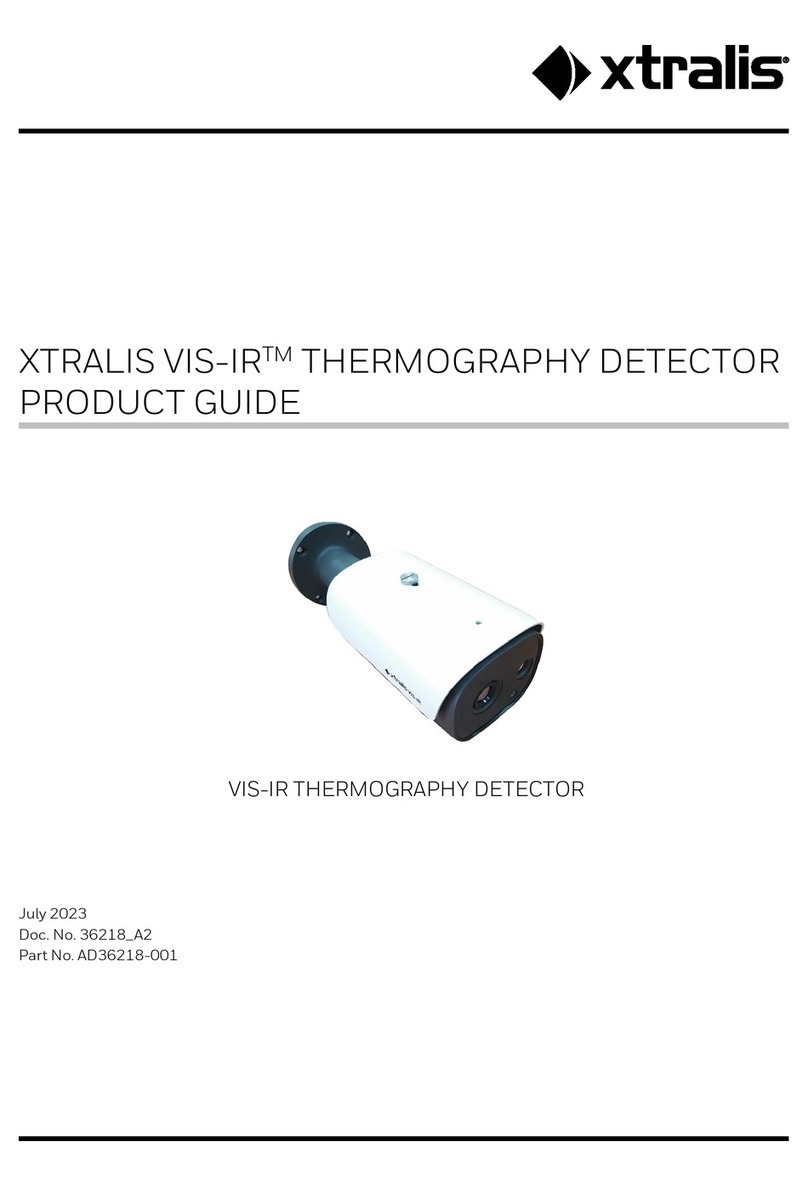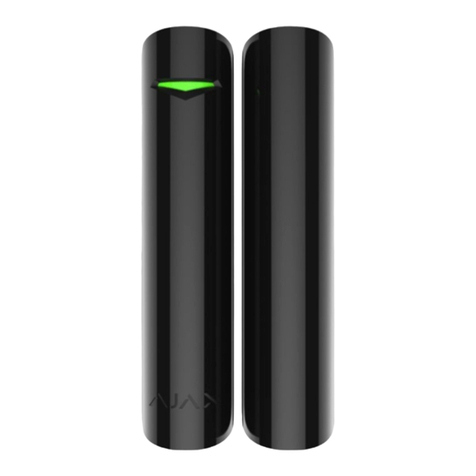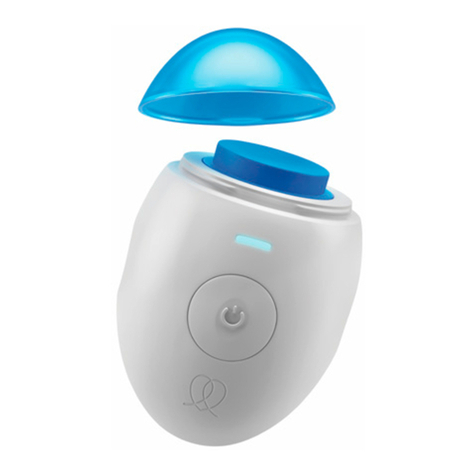SEBSON GS810 User manual

1
Operating instructions for the CO alarm detector type:GS810
Index
1. Carbon monoxide (CO) –cause and effect..................................................................................... 3
2. Safety instructions ........................................................................................................................... 4
3. Installation locations of CO-alarm detectors in apartments and houses......................................... 4
3.1 CO alarm detectors should be installed in the following rooms:...................................................... 4
3.2 Rooms where no CO alarm detector should be installed:............................................................... 4
4. Product Overview ............................................................................................................................ 6
5. Installation........................................................................................................................................ 6
6. Startup ............................................................................................................................................. 7
6.1 Activation of the CO alarm detector................................................................................................. 7
6.2 Checking the function of the CO alarm detector.............................................................................. 8
6.3Recurring self test of the CO alarm detector ................................................................................... 8
7. Explanation of the LED modes........................................................................................................ 8
8. Overview of all functions.................................................................................................................. 9
9. What to do if alarms were triggered............................................................................................... 10
10. Technical Data............................................................................................................................11
11. Information to the re-built battery................................................................................................11
12. Maintenance and cleaning......................................................................................................... 12
13. Disposal of waste batteries........................................................................................................ 12
14. General Disposal....................................................................................................................... 13
15. CE Declaration of Conformity.................................................................................................... 13

2
Thank you for choosing a product of SEBSON. Please read the instructions carefully and keep them
for looking up before start-up this product. Along and failure-free operation can only be guaranteed if
the installation and start-up is done properly.
Note: Please read all warnings and instructions before using this equipment! Keep these operating
instructions for future reference!
This CO-alarm detector is used for early warning in case of hazardous concentration of carbon
monoxide in rooms. As soon as a noxious concentration of carbon monoxide is detected, the red LED
flashes and a loud alarm sounds.
This CO alarm detector may only be used in private rooms.
The CO-alarm detector must be activated before use (see chapter:6.1).
After a maximum of 10 years as well as with signaling the battery fault signal, the CO alarm
detector must be replaced.
CO-alarm detector is particularly suitable for rooms in which fuel burners (e.g. gas heaters or
gas boilers) are installed.
Please note that this CO alarm detector is not a substitute for smoke-alarm-, gas- or heat-
detector!
The installation of the CO-alarm detector is not a substitute for the proper installation, use and
maintenance of fuel burners, including appropriate ventilation and exhaust system!
Scope of delivery:
CO-alarm detector type: GS810
1 screw and 1 dowel for fixing and activation
Model-number: GS810
CO alarm detector GS810

3
1. Carbon monoxide (CO) –cause and effect
Carbon monoxide (CO) can not be seen, smelled or tasted. The formation of CO in the blood is
called carboxyhemoglobin (COHb). The enrichment of carbon monoxide (CO) in the blood
prevents the oxygen admission. This has the consequence that vital organs such as e.g. the heart
or the brain are no longer adequately supplied with oxygen. According to concentration, a CO-
poisoning can take a few minutes and even lead to death.
The most common sources of CO are:
Faulty gas heating (gas boiler) and gas stoves
Running car engines or lawn mower engines in enclosed rooms
Blocked or not cleaned chimneys, fireplace or flues
Portable fuel burners
Fuel-powered tools
Note: Heating system, vents, chimney and flue should be checked yearly by a qualified
professinal!
The following symptoms appear by a carbon monoxide poisoning:
The symptoms of carbon monoxide poisoning are similar to influenza, but without fever. Other
symptoms are dizziness, tiredness, weakness, headaches, feeling of sickness, vomiting,
drowsiness and confusion. For unborn and born babies, young children, pregnant women, senior
citizens and people with heart or respiratory disease are at the highest risk for serious infury or
death!
CO-concentration
Symptoms
Low:
slight headaches nausea, vomit, tiredness (often described as „similar to
influenza“ symptoms).
Middle:
Strong headaches, giddiness, vomit, sleepiness, cramps
High:
Unconsciousness, cardiorespiratory failure, death
The above poisoning levels are relate to healthy adults. The levels vary for different person or risk-
groups. A strong carbon monoxide poisoning can cause permanent damage and disability as well
as the death of a person. Many sufferers are aware that they feeling not well, but can not get
themselves in safety or request help.

4
2. Safety instructions
Note: The alarm sound is very noisy! Your hearing can be damaged if you are exposed to the
loud alarm sound over a longer period of time!
Please do not paint over the CO alarm detector with paint or similar!
Do not install the detector in difficult to access areas! The detector must be checked regularly
for its function!
Get rid of the SO alarm detector regularly (at least every six months) of dust and other
deposits of dirt! Please use a paint brush or a slightly cloth moistened with water. In dusty
conditions, the heat detector should be cleaned monthly.
This product is only suited for indoor-use and not for outdoor-use. Protect it against humidity
and moisture, splashing or dripping!
Damaged heat detectors must be replaced immediately!
Please do not use any violence for installation and operation (for example using a
screwdriver, pliers, hammer etc.).
Do not drop the device because this can damage it!
The conversion of this product is not allowed. Any other use than the description may result
in damage to the product.
Please keep this product away from children! Caution: The packaging contains small parts
that can be swallowed by children!
3. Installation locations of CO-alarm detectors in apartments and houses
3.1 CO alarm detectors should be installed in the following rooms:
Rooms with fuel burners e.g. gas heaters (boiler) or wood stoves
Bedrooms and rooms where people are staying for an extended period of time
Corridors and stairs (at least one CO-alarm detector per floor)
3.2 Rooms where no CO alarm detector should be installed:
Cellar and garage Reason: Due to the location of these rooms, the alarm is usually not
mostly heard
Kitchen and bathrooms
Note: An unsuitable location can cause disturbances, e.g. cause a false alarm. The sensors of the
CO alarm detector are damaged by the use in unsuitable locations e.g. due to high humidity.

5
When istalling the CO alarm detector please note the following:
Mount the device at least 2 to 5 meters in the horizontal distance from all the fuel combustion
equipment.
Do not install in rooms where no air exchange is, e.g. in tops of vaulted ceilings or gable roofs!
The distance to the ceiling should be at least 20 cm, because in corners none or too low air
circulation takes palce and the carbon monoxide can not get there.
Positioning at the top of the eye ensures an optimum monitoring of the control light.
In bedrooms the installation is to be preferred in respiratory height.
Do not install in turbulent air (e.g., ceiling ventilators).
Do not install near ventilation systems, chimneys or exhaust pipes as well as doors and
windows, as this may have a lower carbon monoxide concentration.
Keep the CO alarm detector away from steam and dampt areas such as the the bathroom or
kitchen.
Avoid spraying aerosols near the CO alarm detector. This can block the air slots of the CO
alarm detector.
Do not mount the CO alarm detector in areas where temperatures below -10 ℃or above 40 ℃
prevail.
Do not mount the CO alarm detector behind curtains, furniture or other objects. The carbon
monoxide must be able to reach the CO alarm detector unimpeded in order to be able do
detect it reliably.
Make sure that all ventilation openings of the appliance are free.
Note: If you are unsure about the installation of the CO alarm detector in your rooms, please
consult a specialist!

6
4. Product Overview
1. Speaker
2. Alarm:
Display of the alarm status (red LED)
3. TEST/SILENCE:
Button for function control or mute
4. FAULT:
Error display (yellow LED)
5. POWER:
Control light (green LED)
5. Installation
Before starting up this product, please check for external damage. In case of visible external
damage we immediately dis-advise the start-up of this product! Please remove all packaging
material of this product before the first start-up.

7
6. Startup
6.1 Activation of the CO alarm detector
The CO alarm detector is activated during the installation, for example on the wall, by means of a
screw (see chapter 5). When activated, a beep sounds and all three LEDs light up briefly.
1. Drill a Ø 5.0mm hole in the wall and insert the dowel into the drilled hole.
2. Turn in the screw until the screw head protrudes about ca. 55mm from the wall.
3. The mounting hole for the screw is located on the rear of the housing. Insert the screw head
into the mounting hole and press the CO alarm detector slightly down. If the CO alarm
detector is properly attached, a short beep sounds while the LEDs briefly flash.
4. Test the alarm with the button TEST/SILENCE. Make sure that the unit „alarm“(4x short
beep) sounds.
Note: If the CO alarm detector is not installed properly, the function of the device is not
guaranteed!

8
6.2 Checking the function of the CO alarm detector
To test the CO alarm detector please keep the device at least one arm's length away from your
body before performing the function check! Your hearing may be damaged by the loud alarm
sound! Then briefly press the TEST/SILENCE button. When the alarm sounds in succession 4x
and the LED lights up red while the device is working properly. It checks whether the electronics,
the alarm sensor of the CO alarm detector and the batterie are working properly. The alarm will
automatically turn off after the TEST/SILENCE button is released.
Note: Test the device weekly! If the test alarm is not performed as described, replace the CO
alarm detector immediately!
6.3 Recurring self test of the CO alarm detector
When operating properly, the green LED (POWER) flashes every 30 seconds.
Note: If the CO alarm detector is not working properly, contact the manufacturer!
7. Explanation of the LED modes
Green LED (POWER) flashes every 3 second
for about ca. 30 seconds:
Warm-up after activation –everything ok
Green LED (POWER) flashes every 30
seconds:
Device is working properly
Yellow LED (FAULT) flashes and beeps 1x
every 30 seconds:
The device is defective or the battery is low.
Replace the device!
Yellow LED (FAULT) flashes and beeps 2x
every 30 seconds:
Battery is empty. The device must be replace.
Yellow LED (FAULT) flashes and beeps 3x
every 30 seconds:
The device must be replace. Sensor does not
work properly! Device is too old!
RED LED (ALARM) flashes and beeps 4x
shortly every 5 seconds:
Hazardous CO concentration recognized. CO-
Alarm! In this case please follow the steps
described in Chapter 9!

9
8. Overview of all functions
Commissioning
With the activation of the device (see chapter 6.1) a beep
sounds and all three LEDs flashes up briefly at the same time.
Deactivation of the CO
alarm detector
The CO alarm detector can be deactivated. This function is
required when e.g. the battery is too low and the device must be
replaced. In chapter „Information about the built-in-battery“ is
described how the device is deactivated. Note: The deactivation
can not be undone anymore!
Error warning
If the device beeps once every 30 seconds and the yellow LED
(FAULT) flashes, the alarm will not work. No CO-gas is detected
and no warning signal is sent. The CO alarm detector is
defective or the battery is empty. Replace the CO alarm
detector!
Low battery voltage (battery
warning signal)
If the device beeps twice every 30 seconds and the yellow LED
(FAULT) flashes, the battery is empty. Replace the CO alarm
detector as soon as possible!
Muting the battery warning
signal
If the device sends the battery warning signal, press the button
TEST / SILENCE. The warning tone is muted for approx. 9 hours
while the yellow LED (FAULT) continues to flash every 30
seconds.
Warning of the end of life
If the device beeps three times every 30 seconds and the yellow
LED (FAULT) flashes, the end of life of the device is reached
CO-alarm warning
At a dangerously high CO-concentration, the red LED (ALARM)
flashes four times in succession with four short loud beeps every
5 seconds. The alarm will sound until the CO-concentration has
returned to normal in the room or is not dangerous anymore. In
this case please follow the instructions which is given in chapter
„What to do if alarms were trigged“!
Mute the CO-Alarm
Attention: The muting may be carried out only under the
condition that is certain that the air does not have a too high CO-
concentration. Please check your device, such as gas heaters,
fireplaces etc., by a specialist before muting the device!
To mute the device press the TEST/SILENCE button. The signal
tone is switched off for approx. 5 minutes while the red LED
(ALARM) continues to flash shortly for times briefly. The signal
tone is reactivated within 6 minutes after pressing
TEST/SILENCE button. The alarm is triggered with an existing
CO-concentration of more than 45ppm.
Volume
When the CO alarm sounds, the beep starts with a lower volume
of <85dB for about 10 seconds before reaching the full volume
of> 85dB. This is to avoid that persons present are startled by

10
9. What to do if alarms were triggered
1. Immediately ensure for fresh air supply by opening doors and windows!
2. Press the TEST/SILENCE button, to mute the alarm tone. This prevents panic!
3. If possible, turn off all combustion devices and gas supplies!
4. Call the emergency-call when people complain about symptoms of poisoning, e.g. headaches
or nausea (see chapter 1)!
5. Pay attention to all the people in the room and allow the immediate leaving the room. Make
sure that nobody remains behind! Also make sure that no one can return or move away from
the open door or open windows until the rescue forces have arrived. The alarm must not be
deactivated during this time!
6. Do not restart the switched-off combustion device until it has been checked by an expert!
7. Check each combustion device! If no specialist or verification device is available, follow the
manufacturer’s instruction and refer directly to the manufacturer of the defective device.
Note: Even if the CO alarm detective does not indicate any danger after venting, it is advisable to
determine the cause of the alarm or the source of the carbon monoxide! There is danger to life!
the sudden loud alarm sound
Function-Test
To test the alarm, press the TEST/SILECNE button. The test
alarm ends by releasing the TEST/SILENCE button.
Note: Test the device weekly! If the test alarm is not executed as
described, replace the CO alarm detector immediately!

11
10.Technical Data
Power supply:
DC 3V (1 sealed lithium-ion-battery (type: EVE CR17335))
Type of device:
Type B
Sensor-type:
electrochemical
Product life:
10 years after production date
Sensitivity adjustment:
Complies EN 50291-1: 2010 + A1: 2012 Standard.
30PPM without alarm before 120 minutes
50PPM between 60 to 90 minutes
100PPM between 10 to 40 minutes
300PPM less than 3 minutes
Standby current:
<20μA (average)
Alarm current:
<25mA (average)
Air humidity:
-10 - 40 ℃, air humidity ~ 95%d
Alarm Volume:
≥85dB at 100cm at 3,2 ± 0,5KHz pulsing alarm
CO alarm mute:
approx. 5 minutes
Battery Charge: Warning - Silence
approx. 9 hours
11.Information to the re-built battery
This CO alarm detector contains a non-replaceable and non-rechargeable lithium-ion-battery. This
must be activated before commissioning (see chapter: "Installation"). The battery will last
approximately 10 years during normal operation. If the unit beeps twice every 30 seconds and the
yellow LED (FAULT) flashes, the battery is empty and the CO alarm detector must be replaced as
soon as possible.
Note: Batteries should never be exposed to extreme heat (for example, by strong sunlight or fire).
Never throw batteries into the fire. Risk of explosion! A constantly too high or too low air humidity
may reduce the battery life.
Deactivation of the battery:
This CO alarm detector is equipped with a battery monitoring circuit. When the battery becomes
weaker, the alarm beeps twice every 30 seconds. The yellow LED (FAULT) flashes. This means
that the CO alarm detector must be replaced. To stop the alarm sound and the flashing, the CO
alarm detector should be deactivated.
Deactivation of the CO alarm detector is final. The device can not be activated anymore after
deactivated!
After deactivation the CO alarm detector no longer detects CO-gas!

12
As soon as the alarm is deactivated, the battery is emptied and the CO alarm detector has no
functions!
As soon as the alarm is deactivated, it can no longer be mounted!
1. Slide the alarm slightly up and remove it from the screw on the wall.
2. Push the label at the back of the framed triangle symbol in the middle with a slotted
screwdriver and pry out the inside pin.
3. Press this pin through the label on the back of the triangle symbol in the upper right
corner.
12.Maintenance and cleaning
This device is maintenance free. Please remove the housing regularly from dirt, dust or spider
webs! For this, use the best vacuum cleaner with soft suction brush or a soft cleaning cloth.
Ensure that the housing and the air slots are free from contamination at all times, in order to
ensure proper functioning.
Note: Never open the housing to clean the unit from the inside. This can impair the functionality
and the warranty guarantee will be extinguished!
The following substances can affect the sensor and cause a false alarm:
Methane, propane, isobutene, isopropanol, ethylene, benzene, toluene, ethyl acetate, hydrogen
sulfide, sulfur dioxide, alcohol-based-products, paints, thinners, solvents, adhesives, hairsprays,
after shaves, perfumes and cleaning supplies.
13.Disposal of waste batteries
Batteries and rechargeable batteries may not be disposed in the household waste. The end-
consumers are legally obligated to the return of all used batteries and/or accumulators. After
usage you can return batteries and / or accumulators gratuitous in the sales point or in their direct
vicinity (for example at municipal collection points and trade). Otherwise, you can also return the

13
batteries and / or accumulators by post to us: SEBSON - Gernotstr.17-44319 Dortmund –Germany
Batteries and / or accumulators which contain harmful substances are marked with the
symbol of a crossed-out waste bin and may not be disposed of with household waste
Under the dustbin symbol is the chemical name of the harmful substance - in the
example below - "CD" for cadmium, "Pb" stands for lead, "HG" for mercury .
Meaning of symbols:
1 Battery containing more than 0,002 mass percent of cadmium
2 Battery containing more than 0.0005 mass percent of mercury
3 Battery containing more than 0,004 mass percent of lead
The harmful Substances which are contained in the batteries,may cause danger to health and the
environment in case of improper disposing.
14.General Disposal
This product may not be disposed of with household waste. At the end of its useful life,
the product must be returned to a point of acceptance for the recycling of electric and
electronic device. Please ask your local municipality for the point of acceptance! As the
devices contain valuable recyclable materials, they should be sent for recycling, in order
not to harm the environment or human health from uncontrolled waste disposal.
15.CE Declaration of Conformity
This product has been prepared according to the listed below guidelines.
EMC 2014/30/EU
RoHS 2011/65/EU
SEBSON - Inh.: Sebastian Sonntag - Gernotstr.17 - 44319 Dortmund –Germany www.sebson.de
Table of contents
Other SEBSON Security Sensor manuals
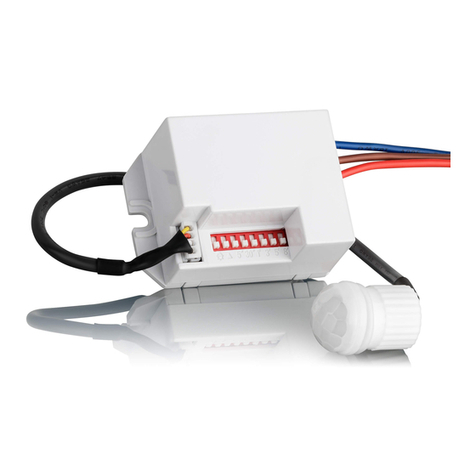
SEBSON
SEBSON IR BS A User manual
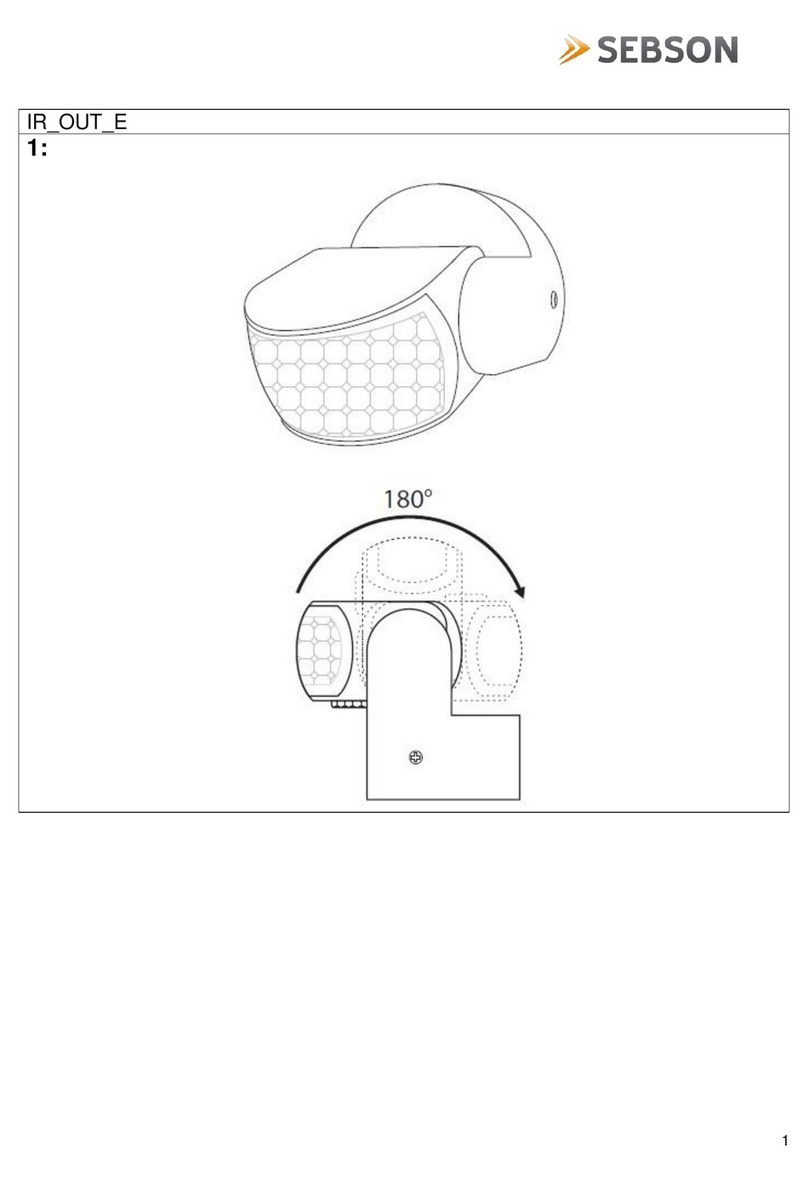
SEBSON
SEBSON IR_OUT_E User manual

SEBSON
SEBSON WD GS153W User manual

SEBSON
SEBSON HD GS403 User manual
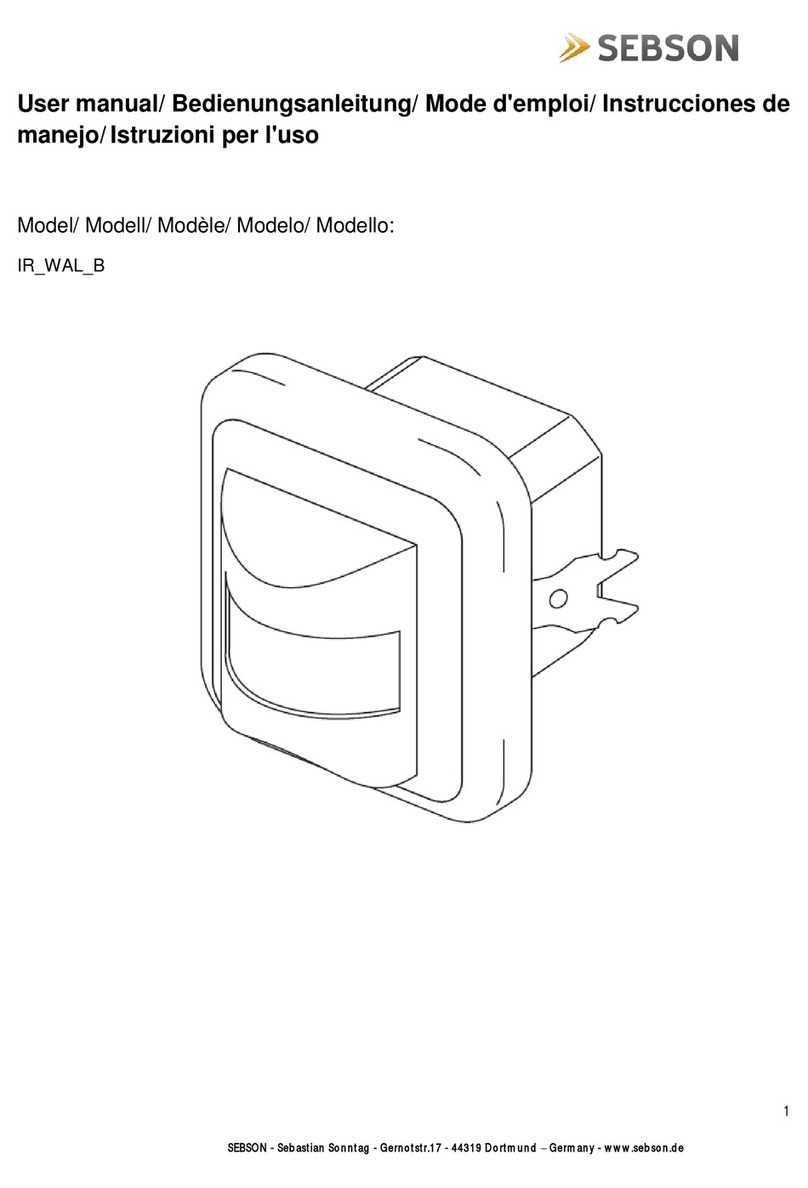
SEBSON
SEBSON IR_WAL_B User manual
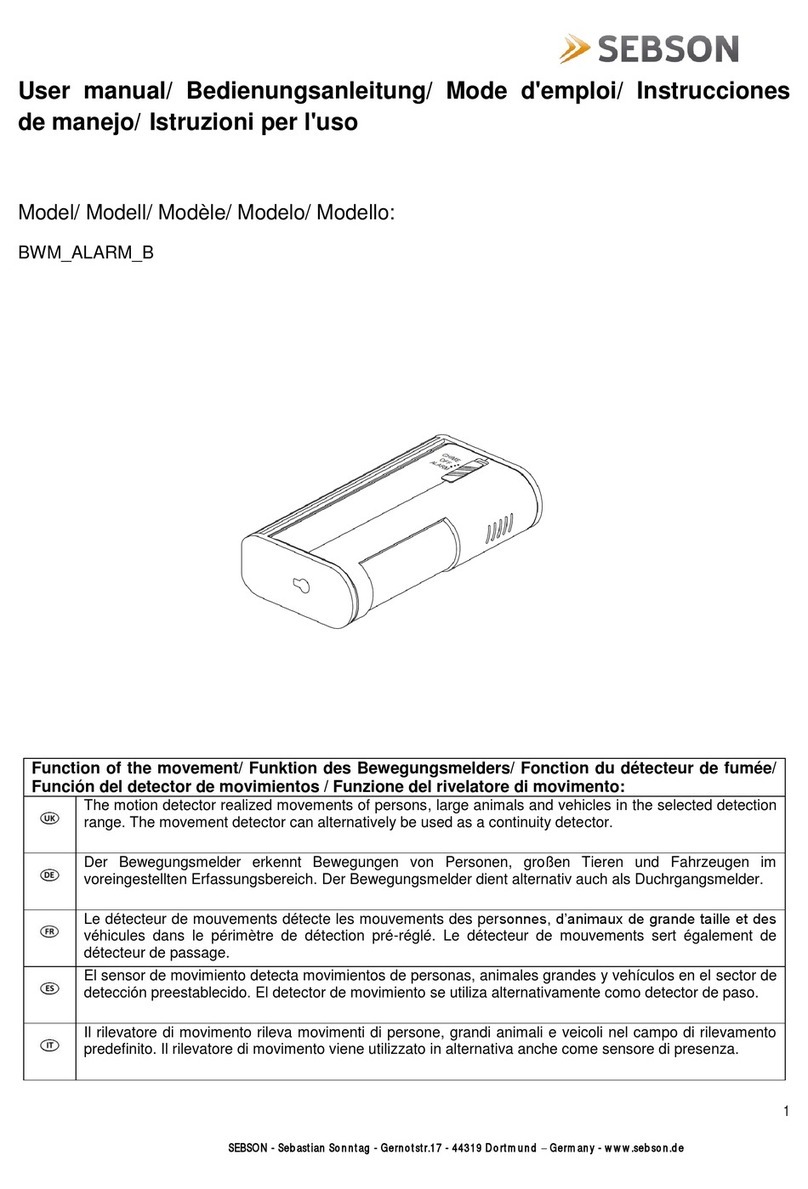
SEBSON
SEBSON BWM_ALARM_B User manual
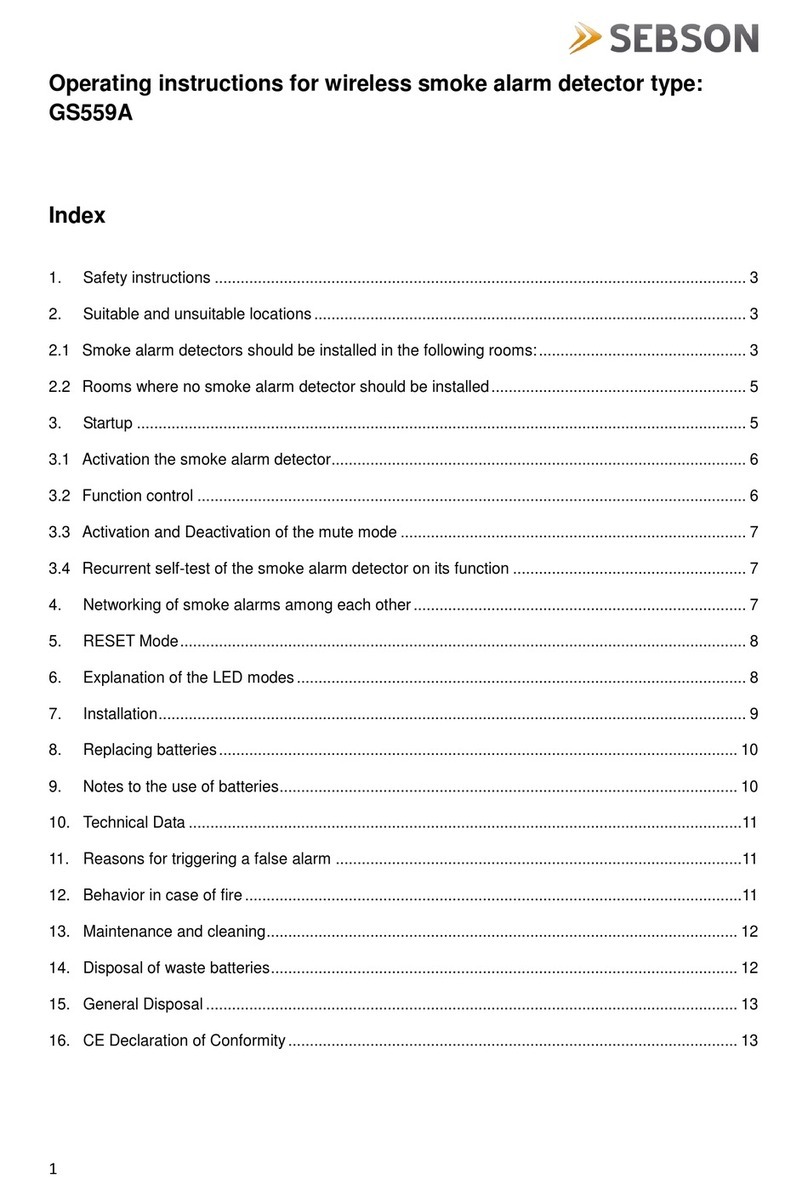
SEBSON
SEBSON GS559A User manual

SEBSON
SEBSON IR WAL D User manual
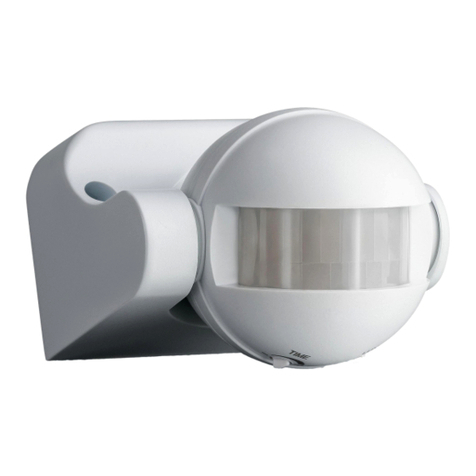
SEBSON
SEBSON IR OUT B User manual
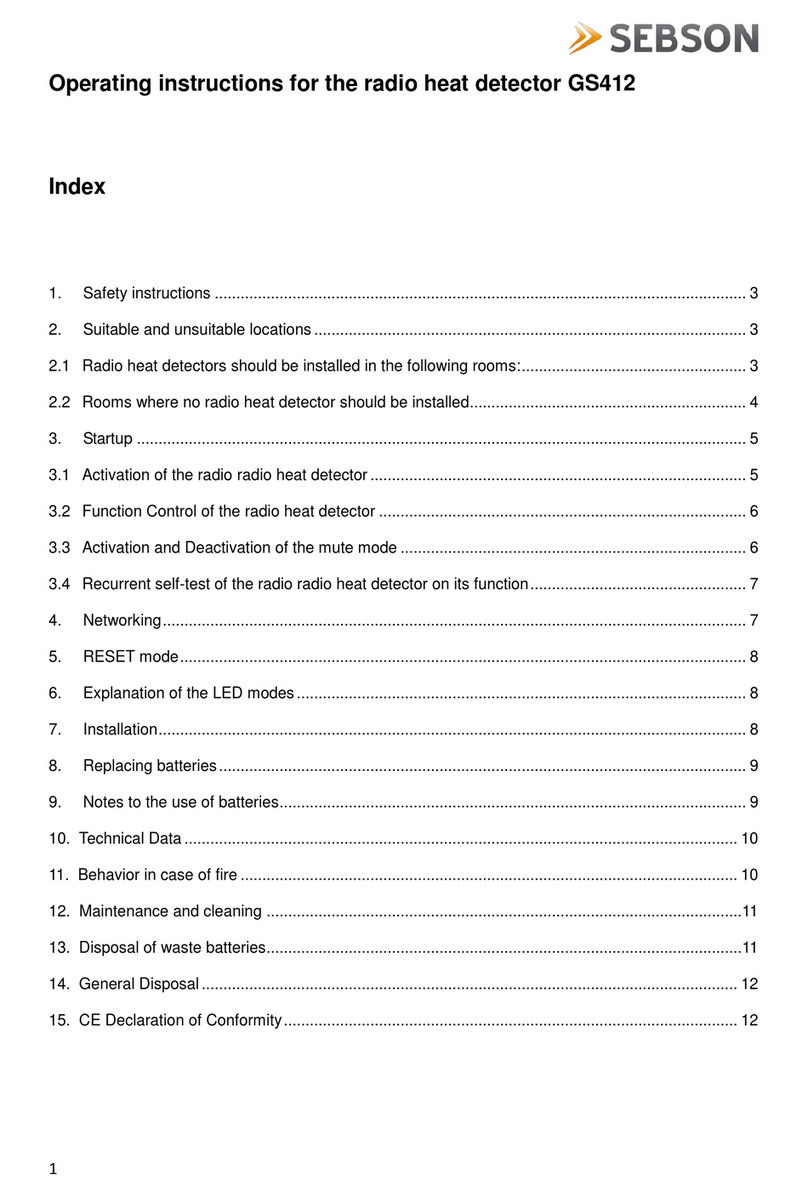
SEBSON
SEBSON GS412 User manual
Popular Security Sensor manuals by other brands
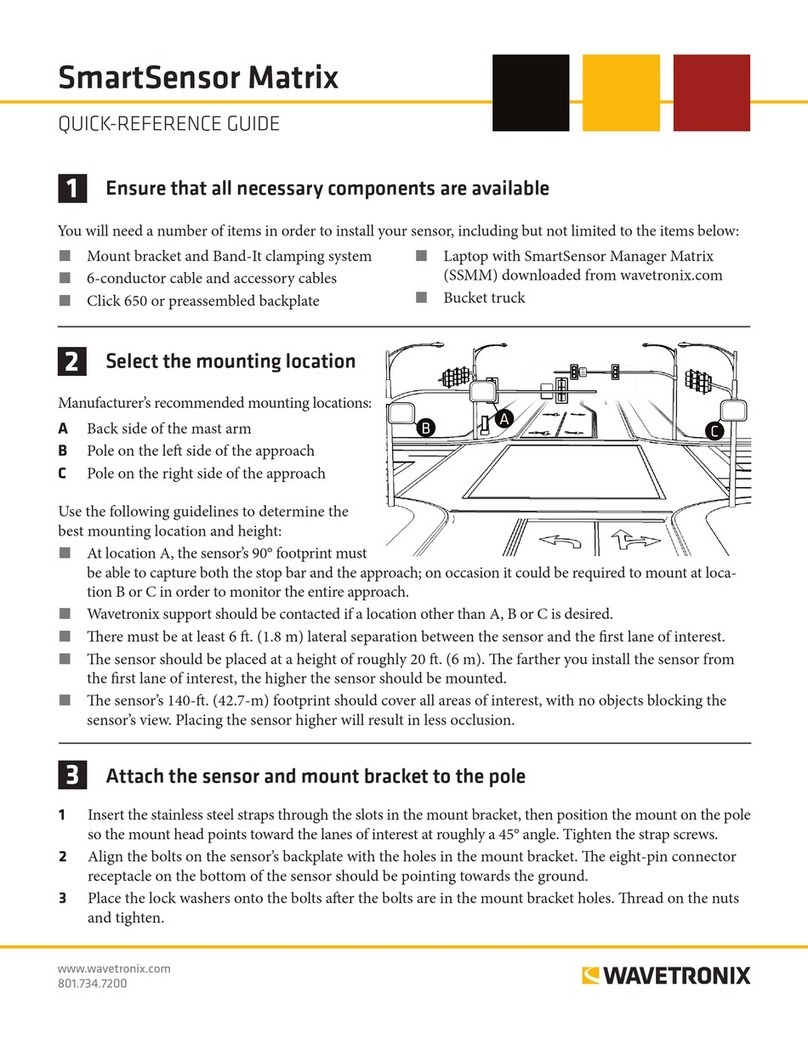
Wavetronix
Wavetronix SmartSensor Matrix Quick reference guide

Essence
Essence Care@Home Hip Fall Detector user guide

Emerson
Emerson Rosemount 396P instruction manual

Powerfix Profi
Powerfix Profi KH 3236 operating instructions
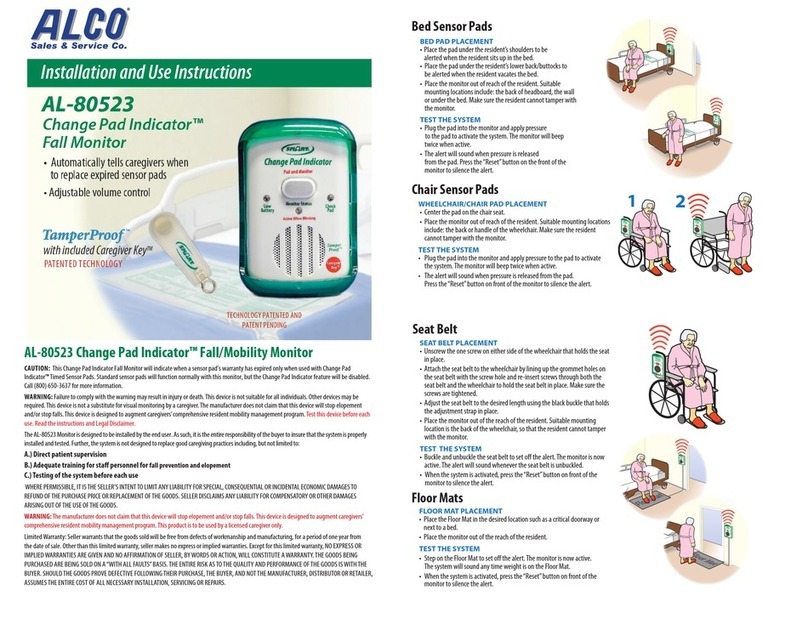
SMART
SMART ALCO AL-80523 Installation and use instructions and warnings
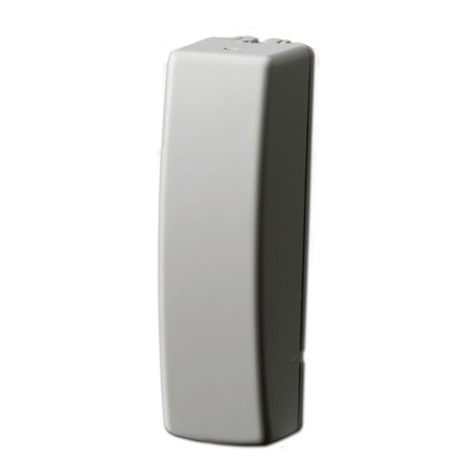
GE
GE 868 GEN2 installation instructions
